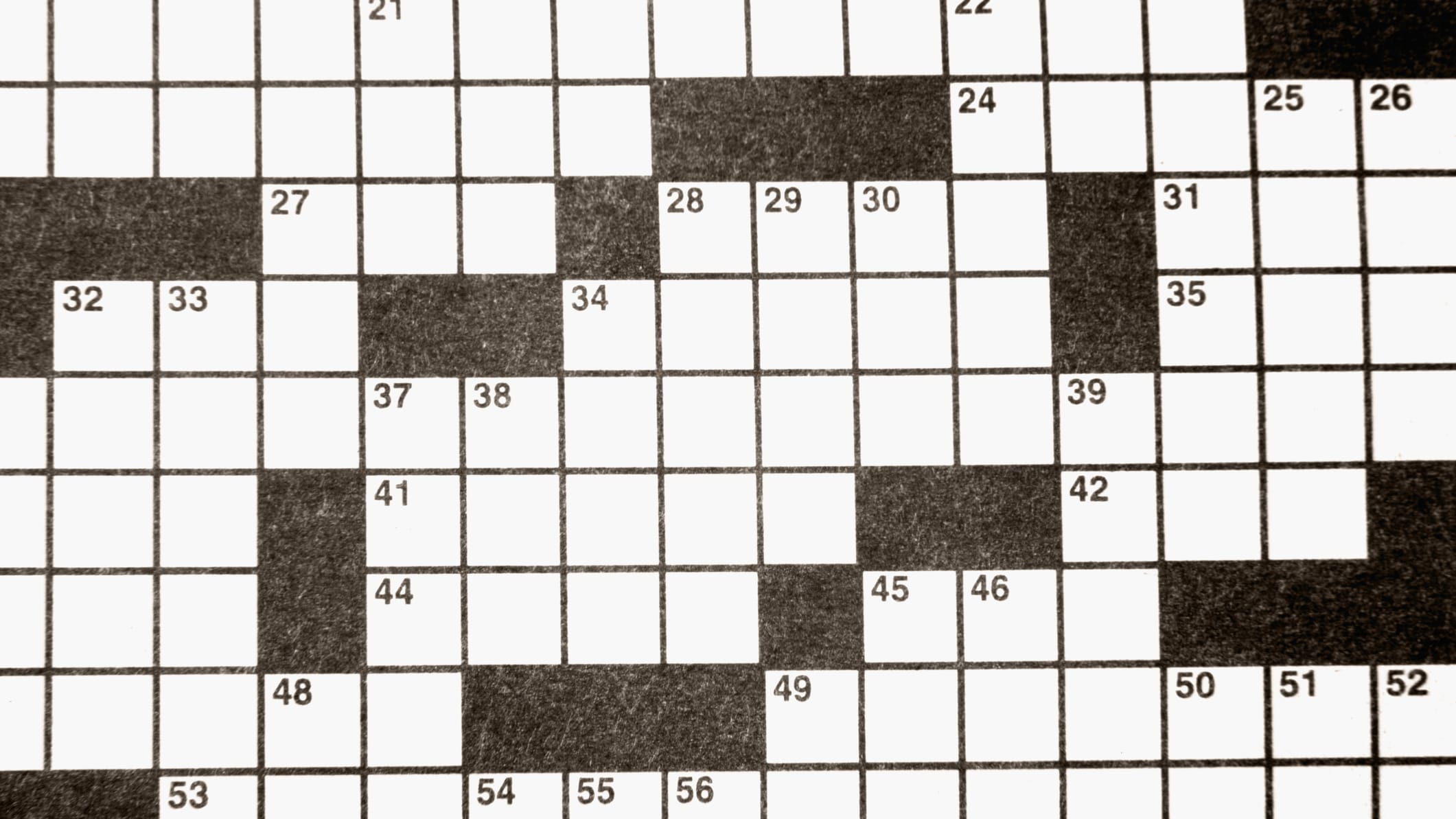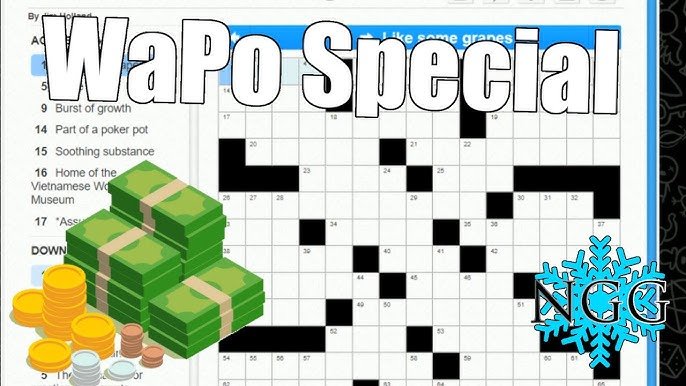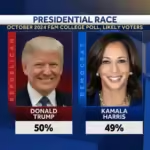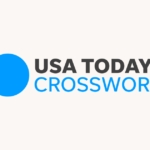Introduction to the Washington Post Crossword
Crosswords have long been a beloved pastime for puzzle enthusiasts, and the Washington Post Crossword holds a special place in this tradition. With roots tracing back to the golden age of newspaper puzzles, it has captivated readers for decades. However, as technology advanced, so did the way we engage with these brain teasers. The evolution from print to digital has transformed not only how solvers access their favorite crosswords but also how constructors create them. This shift mirrors broader changes in society and culture—bringing fresh challenges and exciting innovations along the way. Whether you’re a lifelong fan or new to this cerebral challenge, join us as we explore the fascinating journey of the Washington Post Crossword through its digital transformation!
The Rise of Digital Crosswords
The rise of digital crosswords marks a Washington post crossword significant shift in how enthusiasts engage with this timeless puzzle. With the advent of smartphones and tablets, solvers can now carry their favorite crosswords anywhere they go.
No longer confined to newspapers or magazines, crossword lovers enjoy instant access to daily challenges at their fingertips. This convenience has attracted a new generation of puzzlers eager for quick entertainment.
Digital platforms also offer interactive Washington post crossword features that enhance the experience. Timers track solving speed, while hints and error-checking reduce frustration during gameplay.
Moreover, the ability to play against friends fosters healthy competition. Many players relish sharing scores on social media, creating an engaging community around what was once a solitary pastime.
The transition from print to digital is not just about accessibility; it’s about evolving the game itself into something more dynamic and inclusive.
Benefits of a Digital Crossword Format
The digital crossword format brings a host of advantages for both solvers and constructors alike. Accessibility is one of the major benefits. Players can tackle puzzles anytime, anywhere, using their preferred devices.
Another perk is the instant feedback mechanism. Digital formats provide immediate corrections on answers, allowing users to learn as they play. This feature transforms the experience from merely solving to understanding.
Interactive elements enhance Washington post crossword engagement too. Many platforms offer hints or reveal letters when players are stuck, making it more enjoyable for novices and seasoned puzzlers.
Moreover, digital crosswords often come with customizable settings that cater to individual preferences—like font size or background color—which creates a personalized experience.
Sharing has never been easier in the digital realm. Solvers can challenge friends via social media or collaborate in real time on complex grids. It fosters community among crossword enthusiasts worldwide.
Challenges Faced with Transitioning to Digital
Transitioning the Washington Post Crossword from print to digital was not a simple feat. One significant challenge was adapting the format for various devices. Crosswords have traditionally relied on paper dimensions that don’t translate directly to screens.
Another hurdle involved maintaining user engagement. The tactile experience of a pencil gliding over a crisp newsprint is vastly different from tapping on a touchscreen. This shift required innovative design strategies to captivate solvers.
Technical issues also posed challenges, particularly in ensuring seamless updates and functionality across platforms. Bugs or glitches could frustrate users who expect smooth experiences.
Moreover, there’s the question of accessibility. It became crucial to ensure that all crossword enthusiasts, including those with disabilities, could enjoy this beloved pastime without barriers.
Balancing traditional methods with modern technology continues to be an ongoing process as developers strive for perfection in every puzzle release.
Innovations in the Digital Crossword Experience
Innovations in the digital crossword experience have transformed how enthusiasts engage with puzzles. Today, players can access crosswords on various devices, from smartphones to tablets. This accessibility has broadened the audience significantly.
Interactive features enhance user engagement. Many digital platforms allow solvers to reveal hints or eliminate incorrect letters with a simple tap. These tools cater to beginners and seasoned puzzlers alike, making each session more enjoyable.
Real-time collaboration is another Washington post crossword game-changer. Crossword fans can now tackle challenging grids together, regardless of their locations. Social sharing options let users boast about completed puzzles or seek help from friends—a social dimension that print could never provide.
Additionally, adaptive learning algorithms are evolving crossword creation. These systems analyze solver habits and preferences, tailoring challenges for individual users while maintaining an element of surprise each time they open the app or website dedicated to the Washington Post Crossword.
Impact on Solvers and Constructors
The transition from print to digital has significantly shifted how solvers engage with the Washington Post Crossword. Accessibility is one of the most notable changes. Crosswords are now available at any time, making them more appealing to a diverse audience.
Constructors also benefit from this evolution. Digital platforms allow for immediate feedback and interaction with their puzzles. This connection enhances creativity and encourages experimentation with clues and themes.
Moreover, online communities have blossomed around crossword solving. Solvers share tips, hints, and strategies in real-time across social media platforms, fostering a sense of camaraderie among enthusiasts.
Additionally, constructors can analyze data on solver trends through digital tools. Understanding what works or doesn’t allows for refining techniques and improving future puzzles. The dynamic nature of this environment creates an exciting landscape for both solvers and constructors alike.
Washington post crossword
The Washington Post Crossword stands as a beacon for puzzle lovers. It offers a blend of wit and intellect that keeps solvers coming back.
Each day brings fresh challenges, with clues that range from pop culture to historical references. Its creators have honed the craft over decades, ensuring each grid is engaging and thought-provoking.
Unlike many other crosswords, this one has a distinct voice. The inclusion of local flavor often ties in current events or regional quirks, making it feel personal to its audience.
As technology evolved, so did the crossword format. No longer confined to paper alone, digital platforms now provide an interactive experience that enhances engagement.
Players can compete against friends or access hints at their fingertips. This shift has attracted new generations eager to embrace this classic pastime in modern ways.
Conclusion

The journey of the Washington Post Crossword is a fascinating blend of tradition and innovation. As it evolves, it continues to engage a diverse audience.
Digital platforms have opened the Washington Post crossword new avenues for interaction. Players can now solve puzzles anytime, anywhere, fostering a sense of community among enthusiasts.
With ongoing advancements in technology, the future holds exciting possibilities. Enhanced features may redefine how solvers approach each challenge.
Constructors also benefit from this shift. They have access to tools that streamline their creative process while reaching wider audiences.
As we embrace these changes, the love for crosswords remains unwavering. The Washington Post Crossword stands as a testament to adaptability and creativity in an ever-changing landscape.
Introduction to the Washington Post Crossword
The Washington Post Crossword has long been a staple for puzzle enthusiasts. It began as a print edition, delighting readers with its clever clues and engaging themes. Many remember the excitement of flipping to the designated page, pencil in hand, ready to tackle each challenge.
Crafted by skilled constructors, these crosswords have evolved over decades. They reflect current events, cultural phenomena, and even quirky trivia that keeps solvers coming back for more.
With its blend of accessibility and intellectual stimulation, it’s no wonder that this crossword has become an integral part of many people’s daily routines. For some, finishing the puzzle is as satisfying as completing a marathon.
As technology progressed, so too washington post crossword did the way we interact with puzzles like those from The Washington Post. The journey from paper to screen has opened new avenues for classic wordplay enjoyment.
The History of the Print Crossword
Crossword puzzles have a rich history that dates back to the early 20th century. The Washington Post Crossword, in particular, made its debut in 1946. This marked a significant moment for puzzle enthusiasts seeking daily entertainment.
Print crosswords originally appeared as simple word games in newspapers. They quickly gained popularity due to their engaging nature and ability to challenge readers’ vocabulary and general knowledge.
As the years passed, constructors began pushing boundaries with creative clues and themes. The Washington Post Crossword became known for its cleverness and wit, appealing to both casual solvers and serious aficionados alike.
Each edition brought fresh perspectives while maintaining a loyal following of fans eagerly awaiting each new puzzle. This unique blend of tradition and innovation set the stage for what would come next: the digital revolution transforming how we engage with these beloved brain teasers.
The Digital Revolution: How technology changed the crossword game

The digital revolution has dramatically reshaped the crossword landscape. Once a print-only pastime, crosswords have found new life online and on mobile platforms.
With technology at the forefront, solvers can now enjoy puzzles anytime and anywhere. No more waiting for the morning paper; instant access is just a click away.
Interactive features enhance engagement. Highlighting letters or revealing hints with a tap adds an exciting twist to traditionalproblem-solvingg methods. This interactivity fosters community as users connect through forums and social media.
Moreover, algorithms help create personalized experiences. Tailored difficulty levels cater to novice puzzlers and seasoned pros alike, ensuring that everyone finds their perfect challenge.
Digital formats also enable Washington post crossword constructors to innovate beyond standard grids. Unique designs, themes, and collaborative tools push creative boundaries in ways print never allowed.
As we embrace these advancements, it’s clear that technology will continue influencing how we engage with this beloved pastime.
What makes the Washington Post Crossword unique?
The Washington Post Crossword stands out for its rich history and commitment to quality. It has been a staple in American culture since its inception, attracting solvers of all skill levels.
What sets it apart is the collaborative effort behind each puzzle. Renowned constructors contribute their creativity, ensuring fresh themes and clever clues every week.
Moreover, the crossword embraces current events and pop culture references, making each puzzle relevant and engaging. This connection keeps solvers coming back for more.
The format also adapts to feedback from readers, fostering a community that feels invested in the content. Unique features like themed puzzles or holiday specials add an exciting twist to the routine.
Accessibility plays a key role; it’s available online with easy navigation on various devices, allowing enthusiasts to enjoy the crossword experience anytime and anywhere.
The Impact of Social Media on Crossword Culture
Social media has transformed how crossword enthusiasts connect and share their passion. Platforms like Twitter, Facebook, and Instagram have created vibrant communities where solvers exchange tips, celebrate solves, and even vent about tricky clues.
These platforms Washington Post Crossword allow for real-time discussions during puzzle releases. Solvers can post their immediate reactions or seek help from others when they hit that inevitable brick wall.
Moreover, the rise of hashtags related to specific crosswords fosters a sense of belonging among fans. They can join conversations around daily puzzles or special themed editions, making the experience more communal.
Constructors also benefit from social media exposure. Many build followings by sharing insights into their creative processes or engaging with fans about upcoming puzzles.
This ongoing dialogue enriches crossword culture as it evolves alongside technology while drawing in new generations of solvers eager to participate in this timeless tradition.
Challenges and Advancements in Creating Digital Crosswords
Creating digital crosswords comes with its own set of hurdles. One major challenge is ensuring that the puzzles maintain their charm and complexity while being adapted for screens. Traditional crossword lovers often seek the tactile experience of pen on paper, which can be hard to replicate digitally.
On the flip side, advancements in technology have opened up new avenues for innovation. Interactive features like hints, timers, and scoring systems enhance user engagement. Error-checking algorithms help solvers avoid frustration by providing immediate feedback.
Additionally, mobile optimization has made it easier than ever to enjoy a crossword puzzle on the go. The integration of social sharing options allows players to compete with friends or share achievements online, fostering a sense of community among enthusiasts.
As constructors adapt their techniques to these platforms, they face both opportunities and challenges in delivering puzzles that resonate across diverse audiences.
Future of the Washington Post Crossword: Predictions and Possibilities
The future of the Washington Post Crossword is bright and brimming with possibilities. As technology continues to evolve, we can expect more interactive features that enhance user engagement. Imagine solving puzzles alongside real-time competitions or personalized hints based on your skill level.
Artificial intelligence could play a pivotal role in crafting unique crosswords tailored for individual solvers. This would not only diversify the content but also cater to varying tastes and preferences within the crossword community.
Furthermore, integration with social media platforms may foster a collaborative environment where enthusiasts can share tips, and solutions, and even create challenges among friends.
With an ever-growing interest in digital formats, incorporating video tutorials or live streams featuring constructors could demystify puzzle-making for many aspiring creators. Innovations like these promise to keep the Washington Post Crossword relevant amid changing times while delighting both seasoned players and newcomers alike.
Conclusion
The journey of the Washington Post Crossword from print to digital has reshaped how enthusiasts engage with this classic pastime. As technology evolves, so do the experiences offered to solvers and constructors alike. The transition hasn’t been without its challenges, but the innovations that have emerged are paving a new path for crossword lovers.
With each passing year, we see more integration of social media into crossword culture. This not only fosters community engagement but also allows for real-time feedback and interaction between creators and players. The unique aspects that make the Washington Post Crossword stand out continue to shine through in digital formats.
As we look ahead, it’s exciting to consider what lies in store for the future of crosswords at one of America’s most respected publications. Will there be greater interactivity? Enhanced features? Perhaps even AI-generated puzzles tailored specifically for individual preferences?
One thing is clear: whether on paper or screen, the Washington Post Crossword will remain a beloved challenge for many years to come.


